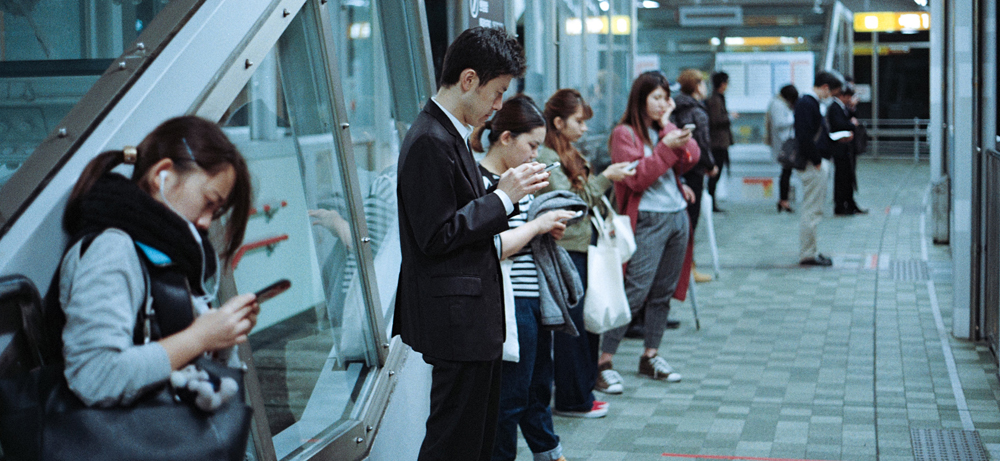Sometimes attributed to Peter Drucker, “Innovate or die” is a tagline embraced by media, managers and academics alike. But then again, what is innovation? In the simplest form, it boils down to introducing a change (i.e., something new). If you were to take an organisation’s perspective then innovation is a new offering (e.g., a product or a service). Academic research distinguishes between radical and incremental innovation. While the former is an innovation that brings a fundamental change to the market and even to society (i.e., something truly new), the latter is an innovation that brings a smaller, less consequential change (i.e., something new, but still somewhat similar to what we already have and know).

Let’s take the telecommunications market as an example. Fifteen years ago, major players were competing on developing unique-looking mobile phones with all sorts of new features. Remember LG Prada, Motorola Razr or Nokia N-Gage? Each such new phone was an example of incremental innovation. And then Apple introduced the iPhone, which many argue is an example of radical innovation. I for one think that iTunes (the software platform developed years before the iPhone that consumers were familiar with and that served as the application store for the device) was the real radical innovation.
In any case, the iPhone was not the first phone to be connected to the Internet, it was not the first phone with a touchscreen and it was not the first phone to offer applications, but it was the first phone to offer a true, seamless smartphone experience. The change that the iPhone brought to the market was in shifting the focus from the phone’s design and its features to what normal people could do with the software housed within (that is, the applications that went far beyond calling, texting, listening to music or playing games). All the iPhone iterations that came in the next decade are examples of incremental innovation. Yes, they house technology that puts the original iPhone to shame and provide consumers with a better, faster and more fun experience, but the change they brought to the market was not as big as the original iPhone release.
Can you become so exasperated with the change (that you didn’t particularly ask for) that you will quit using the application altogether?
So then “Innovate or die” boils down to, at a minimum, introducing some incremental innovation to stay competitive and in the best-case scenario introducing some radical innovation that will bring some serious competitive advantage. But, let’s be realistic, radical innovation usually implies considerable R&D investment or a combination of entrepreneurial spirit and pure luck! Most organizations will not introduce any radical innovation, and most organisations who will attempt to introduce radical innovation will fail in the process… Hence, for most organizations, introducing incremental innovation (i.e., somewhat new products and services or improved versions of existing products and services) is the key strategy to stay competitive.
But what about the consumers?
So, companies need to innovate to stay competitive and the most common form of innovation is incremental, but what does that mean for consumers? Again, it’s a matter of change, or something new in how consumers use products or services. Let’s take the example of digital service providers. What is incremental innovation when it comes to e.g., a software application? At the end of the day, the developer can change how the application looks like (i.e., its design) and what you can do with it (i.e., its features).
Think about the many times each week your smartphone, or computer asks you to install updates. Most of the times, you don’t notice any difference, so if there’s a change it’s in the background (e.g., the developer is fixing bugs). Every now and then though, an application that you have installed and are using suddenly looks different and all sorts of new things are trying to catch your attention. Remember, the developers of those applications are on the one side trying to improve your experience with their incremental innovation, while at the same time trying to maintain an edge over their competitors.
But how do you, the consumer, feel? Do you have to make efforts to figure out how to use the new version of the application? Do you feel like the new version is something that you would like to avoid or are you excited to try it out and figure out what is new? Can you become so exasperated with the change (that you didn’t particularly ask for) that you will quit using the application altogether?
Together with my co-authors Dominik Mahr and Gaby Odekerken-Schröder I’ve tried to address these questions in a study that was recently published in the Journal of Business Research. We started from the idea that I have been presenting so far: Incremental innovation introduces some change that is noticed by the consumer and if the consumer wants to continue using the service then they must somehow deal with that change. Then, we drew inspiration from studies in psychology that tell us that when individuals are faced with a change they first try to understand if the change is something threatening or something challenging and then they try to cope with the change.
Our results show that the change introduced by incremental innovation takes away from the consumer experience. So, what are organisations supposed to do when the incremental innovations they introduce are potentially bad for the consumer experience? They can help consumers see the incremental innovation as a potential gain, rather than as a potential loss. It might seem obvious that with each incremental innovation introduced organizations should explain why the change was necessary and how it is meant to improve the customer experience, but how many times does that happen? Another way organizations can help consumers deal with the change is by encouraging them to explore what is new or by giving them the possibility to express their excitement or frustration about the change. The bottom line is that instead of expecting that consumers will deal with the change on their own, our results show that it is key for organisations to help consumers in the process.
Robert Ciuchita
Assistant Professor
Reference
Ciuchita, Robert, Dominik Mahr, and Gaby Odekerken-Schröder. ““Deal with it”: How coping with e-service innovation affects the customer experience.” Journal of Business Research 103 (2019): 130-141. https://www.sciencedirect.com/science/article/pii/S0148296319303492
Photo: Jens Johnsson
